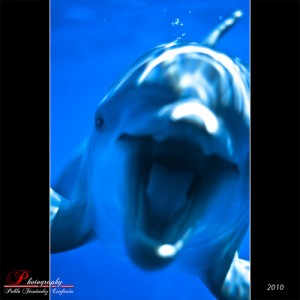4. Dolphin Intelligence
Dolphin intelligence
The research on dolphin intelligence has been going on since 1955 when brain researcher John Lilly began to study the bottlenose dolphins living in an aquatic centre used for filming movies in Florida (Grimm 2011). Although his initial methods were quite crude, the results of his research sparked an interest in dolphin intelligence that has continued through till now. Dolphins have the second largest brain to body size ratio, larger than the great apes and slightly smaller than humans (Grimm 2010). They show extensive development of the neocortex, which is involved in emotions, problem solving, and self-awareness in humans (Grimm 2011). Dolphins are the only other type of animal that can identify themselves in a mirror, besides chimpanzees and humans (Grimm 2011). They show remarkable social intelligence as well, living naturally in large social groupings and having interactions between individuals such as mothers teaching calves to fish and even some evidence of a dolphin culture (Reiss et al. 1997). This high intelligence is used in the wild to find prey, interact with each other as well as other species, figure out new challenges, and often just to engage in play behaviours (Reiss et al. 1997). Captive dolphins are quick to learn how to perform commands by their trainers, and often develop what appears to be strong bonds with their human trainers. Dolphins in captivity have also shown remarkable imitative behaviour, performing actions that mimicked those of other species around them, including a cape fur seal and human divers and observers (Tayler and Saayman 1973). Dolphins have been known to imitate divers cleaning the glass in their environment and a young dolphin was even seen imitating a smoke ring blown at the glass with a similar bubble of milk (Tayler and Saayman 1973). This ability to learn from other individuals is further evidence of the intelligence that these animals possess. The question that arises out of research and observations of the intelligence and self-awareness of these remarkable creatures is: is it ethical to keep these animals in captivity?
